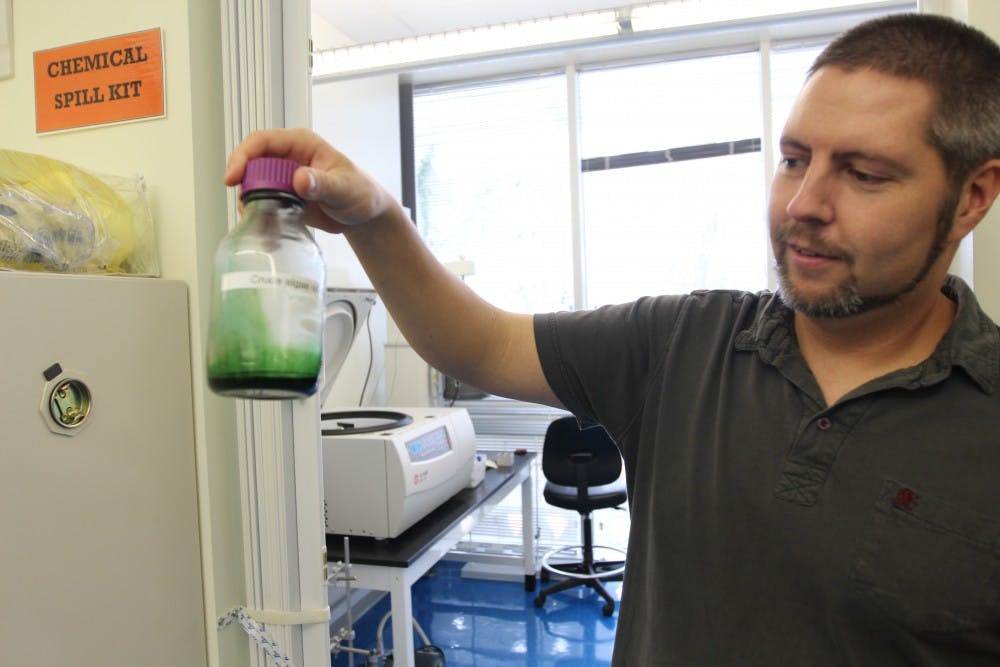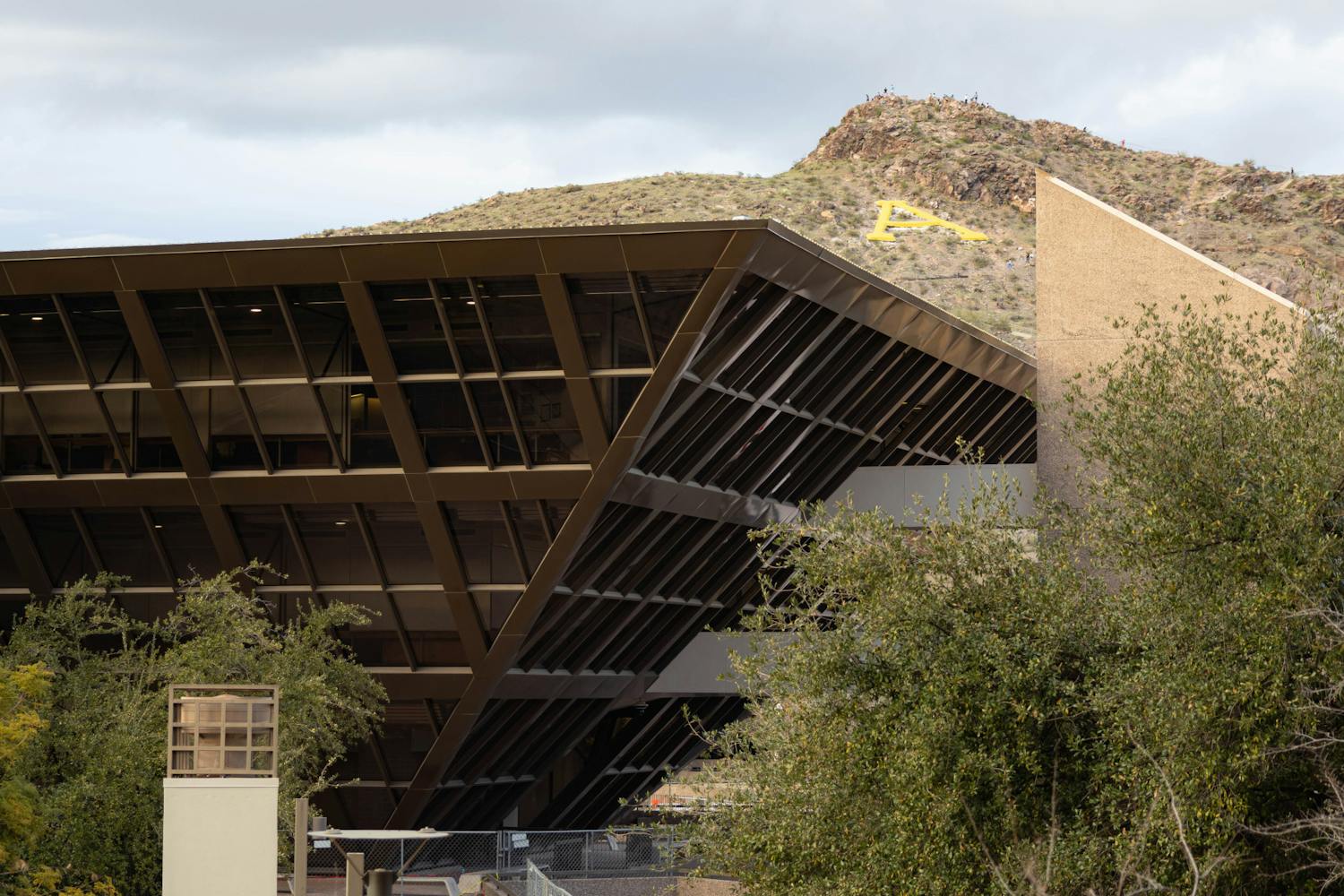The Interdisciplinary Science and Technology Building 3 on the Polytechnic campus already appears as a marriage of science and design, but an installation created by an ASU art student will add to this.
Art graduate student Phillip Carrier has spent this summer working with researchers at the Arizona Center for Algae Technology and Innovation and is developing a piece of art that would capture the essence of work done there.
"The idea is to give a representation of what they do here," he said.
The center, shortened and stylized as AzCATI, consists of a laboratory and outside ponds for growing algae. It's housed in ISTB 3, which was built just a few years ago and features giant windows and modern architecture.
Inside the lab, a team of professors, graduate and undergraduate students and postdoctoral researchers work with approximately 1,500 different strains of algae.
The different types of algae have varying capabilities, said Henri Gerken, a postdoctoral researcher at the lab.
"We have the ability to extract biodiesel, omega 3 fatty acids and antioxidants," he said. "The strains produce different chemicals."
The lab, which stretches across several rooms, has many instruments for analyzing, preparing and extracting materials from the algae, but Carrier's art project is based on one: the bioreactor.
These large rectangular glass containers are used to cultivate algae. There are a few in the lab, and many more spread out in the sunny field across the street.
Bioreactors use carbon dioxide and light from the sun to hasten algae photosynthesis and development. As time goes on, the clear liquid in the container turns darker and darker green as algae grows.
The bubbles of carbon dioxide within the container are continuously moving, and the shadows created by these reactors inspired Carrier.
"It's really unique to be in an environment where I'm trying to make art directly from science," he said.
He's creating an artistic rendition of the bioreactors that will hang in one of the center's enclosed garden spaces. Three plexiglass panes filled with a fluid representing that of the bioreactors will be installed in the glass ceiling.
A clear, light green or dark green film will cover each pane, representing the algae as it matures. While Carrier hasn't yet decided the exact location of the panes, he said he's leaning toward having them in a row of three, from lightest to darkest.
The sun coming through the roof will create shadows that will grow as the day goes on. The moving water and spots in the panels will simulate the shadows in the bioreactors.
"A lot of my work is inspired by light," Carrier said. "Algae has a very unique relationship with light; it needs light to grow. Light and I work well together."
Milton Sommerfeld, co-director of AzCATI, said the mix of scientific work and artistic design benefits the center.
"It's always interesting to be able to take something scientific and look at it in the way an artist looks at it," he said.
AzCATI prides itself on having a staff with diverse interests who can bring something else to their work, he said. Along with allowing Carrier, an art student with little scientific experience, to work with researchers, the staff consists of people from different disciplines, including mathematics, chemistry and biology.
In the three years since the center was established, AzCATI has been able to become one of the best research centers in the country in part because of this diversity in backgrounds and approaches to problems, Sommerfeld said.
"Letting someone provide a concept or an image or an approach that's different that what a scientist would have can be more valuable," he said.
Reach the managing editor at julia.shumway@asu.edu or follow @JMShumway on Twitter.
Like The State Press on Facebook and follow @statepress on Twitter.




